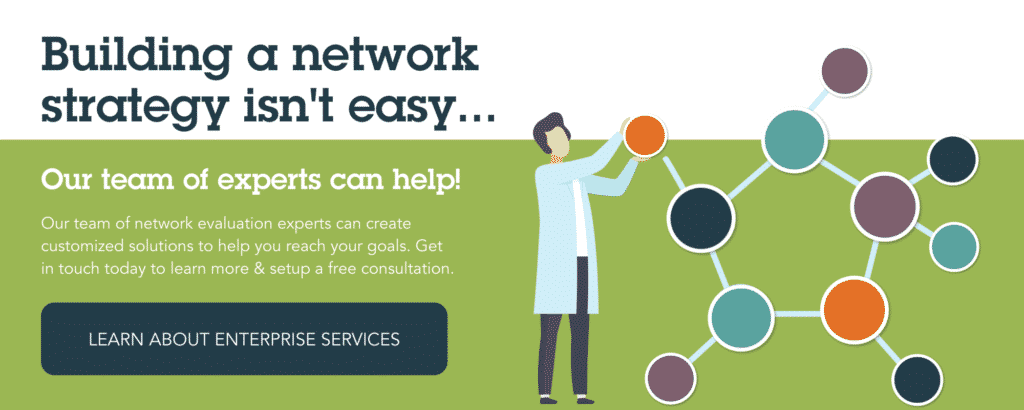Collective Impact is Hard, But We’re Not in the Dark – Part 1: Advice for Collaboration

Collective impact is hard. If you’ve ever done it, you know it beyond a doubt. If you’ve never done it, just read about the five conditions of collective impact. You’ll be able to guess how hard it would be to make it all work. Entire communities have formed around tackling the complexities that we face when trying to achieve collective impact. For this reason, I’ll repeat: collective impact is hard. But we all know the kinds of problems we’re facing today require everyone to pitch in if we’re going to solve them. The good news? We’re not completely in the dark here.
My own journey with collective impact started in Spokane, Washington in 2012. I was working in the Data Center of the Spokane Regional Health District, an incredibly innovative local health jurisdiction, when collective impact swept over the city. It seemed like one night I went to sleep and everyone was thinking about coalitions. Then I woke up and the whole city was talking about collective impact. Soon enough I was serving as Data Manager for Excelerate Success, an education-focused collective impact partnership and a member of the StriveTogether network. And boy, was it hard. But I was hooked! I saw value in the network way of working. I saw people and partnerships across the nation working tirelessly to figure out how to do it right. The complexity of it made me realize I needed to learn more, so I went back to school. I guess this means collective impact’s what brought me to the University of Colorado Denver’s School of Public Affairs PhD program to learn about how organizations work across sectors to achieve common goals. Here’s some of the most helpful stuff I’ve learned so far:
Collective impact isn’t (exactly) a new way of working.
Collective impact is often framed as a new way of working, but this isn’t completely true. I can’t tell you how many times I attended a collective impact conference and heard something like “This is all new and unknown, but we’re in this together and we’re working hard to figure it out!” One thing I’ve learned so far is that this is only sort of true. The second part – about dedicated folks working incredibly hard to figure out how to achieve collective outcomes – is undoubtedly right. But the first part? Eh, that’s debatable, which is great news for us! It means we can learn from similar things that have already been tried, tested, and perfected. There are three areas of existing knowledge that I’ve found to be super helpful in how I think about collective impact: collaboration, measurement, and policy change. This blog post focuses on the first of these areas, collaboration.
Past research on collaboration and cross-sector partnerships can guide your work
One of the core elements of the collective impact framework is collaboration. This is evident in four of the five conditions for collective impact: having a common agenda, using a shared measurement system, engaging in mutually reinforcing activities, and maintaining continuous communication. It’s everywhere in the framework. It’s probably the most challenging part of achieving collective impact. But thankfully the literature on collaboration and cross-sector partnerships can help. This literature uses a whole new library of buzz terms: collective action, cross-sector partnerships, goal-oriented inter-organizational networks, collaborative governance, and collaborative public management are some of the most notable. Do a quick web search for any of these terms and you can learn more about related knowledge (pro-tip: try searching Google Scholar to find high-end research on these topics). For now, I’ll dig into just one of these: collective action.
Collective impact is essentially a formulaic way of undertaking collective action. It is achieved when multiple individuals/organizations work together to achieve some common goal. Elinor Ostrom won a Nobel Prize for her work on understanding collective action in the governance of common pool resources. The design principles she developed can shed light on many of the unknowns in collective impact. These design principles taught us that collective endeavors are more likely to succeed if all actors can communicate regularly and know one another, know that their participation will make a difference, are able to freely enter or exit the group, are committed in the long-term, and have an agreed-upon process for authorizing and/or penalizing one another.
What does this mean for collective impact initiatives?
Drawing from what we know about collective action, there are a few things I’d recommend to any collective impact network:
Create multiple communication channels.
In addition to regular meetings, ensure participants are enabled to communicate through other means. Disseminate (and maintain) a current list of participants that includes their contact information and a brief description of the role(s) they play related to the network. Consider creating a virtual collaboration space using a web-based tool such as Slack, Basecamp, Asana, or Trello. See if partners are responsive to gathering for less structured collaborative time that is focused on developing creative solutions or purposeful networking. These multiple and ample opportunities for communication will foster collaboration among your partners.
Make sure partners know one another.
Previous suggestions such as creating collaborative work spaces and circulating a detailed contact list will help ensure partners know who’s at the table, but there are many other possibilities to consider to help make this happen. If your partnership has a newsletter, highlight a partner each month. Tell about what they’re working on, how their work fits into the partnership, what they need help with, and how they’re able to help other partners. At regular meetings, consider allocating a time for partner announcements and updates to share what their organization is working on and how partners could help meet their goals. When you’re coordinating a large group of diverse partners, it’s essential that they know who else is working alongside them.
Give every partner a job.
Collaboration is important, but it’s also important for partners to have individual jobs and to know how they’re going to be contributing to the collective. Start with a list of all the things that need to be done in the partnership: developing media content, strategic planning, fundraising, implementing programs, coordinating volunteers, fiscal management, website development, etc. Write down everything you can think of and bring these tasks to your partners. Ask them to sign up for a role; they may not always have work to do, but they’ll have a tangible way to understand how they’re contributing to the success of the partnership. Making sure every partner has a job will keep each one engaged and help the entire network see how every partner’s contribution is necessary to reach the end goal.
Set some ground rules.
Partners need to be able to do what makes sense for them individually and for their organization, but it’s also helpful to have a shared understanding of what it means to be a partner. Consider having partners sign a memorandum of understanding (MOU) or agreement (MOA) that outlines the expected time commitment, duration of the partnership, the role(s) they’ve agreed to serving in, an overview of participation benefits and expected contribution, how rules are made and changed, and what a partner must do to remain a partner. At a minimum, make sure partners know what they’re expected to contribute to the partnership and what they can expect to get out of it. Establishing ground rules early on can reduce ambiguity and help secure the long-term commitment of organizations from the start.
The next time you’re feeling at a loss for how to bring everyone together to collaborative effectively, remember there are brilliant minds that have been working on these challenges for longer than you’ve been alive. Don’t let all this amazing knowledge go to waste! Pop on over to your local library or spend some time poking around on Google Scholar and remember those key search terms: collective action, cross-sector partnerships, goal-oriented inter-organizational networks, collaborative governance, and collaborative public management. You may have to spend a few hours to find what you’re looking for, but I promise it’s a goldmine out there.
About the Author: Stephanie Bultema
CU Denver on Network Science
As a current PhD candidate in the School of Public Affairs at the University of Colorado Denver and a researcher in the Center on Network Science, I spend most of my time learning about the connections between people, organizations, and policies. I’m currently putting this knowledge into action by providing research consultation services through Bultema Consulting LLC and serving as co-president of the School of Public Affairs PhD Student Association. I earned a B.A. in English Writing and an M.A. in Administrative Leadership from Whitworth University, with additional coursework completed through Washington State University’s Master of Health Policy and Administration program.






